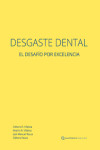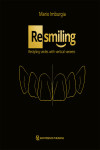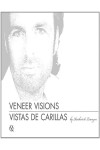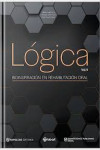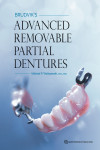AESTHETIC DENTAL STRATEGIES
Stefano Inglese
Producto agotado
Datos técnicos
- ISBN 9788874920266
- Año Edición 2015
- Páginas 310
- Encuadernación Tapa Dura
- Idioma Inglés
Sinopsis
Nature has been and always will be the muse in art and science. Everything that can be observed, in both flora and fauna, is the result of evolution, the constant change of the environment and the forces that interact in this wonderful system.
Every form, every structure, every biologic feature is the result of dissipation and absorption of energy from one system to another as chemical, physical, and mechanical agents, resulting in a slow and gradual change to structure and morphology, and consequently to the functional system as well. In the dental field, a closer observation of the natural teeth in combination with an understanding of the relationship of structure to functionality provide a clear answer as to why a particular form instead of another and what forces have determined the existent situation.
Scientific studies and fossil records have proven that over the past thousands of years human teeth have not undergone any morphologic or functional change. It is clear that developmental stages in relation to the environmental processes are slow and gradual, and therefore biologic structures are quite stable and immutable over a long period of time. However, one can observe significant differences by looking at the teeth of humanoid primates, whose fossils date back to some hundreds of thousands of years ago, when the teeth appeared very large and more robust. They were definitely suited to the nutritional habits of that period but still very similar in shape to human teeth today. Considering dimensional and morphologic stability over a long period of time, the present shape of the teeth can be regarded as an ideal model to observe and imitate. Observation and imitation are not limited to only morphologic and functional aspects but extend to structural and optical phenomena that develop within the structure itself. One cannot ignore or disregard all that nature has created and offered and, above all, cannot presume to be able to create better.
The observation of the natural tooth model in all its facets is definitely the best source of inspiration. This observation is not limited to teeth as single entities but includes their relationship with dental elements and anatomical structures around them: the gingival tissue, lips, face, personality, and character of the patient. Only after this careful study will it be possible to extrapolate all the features in order to establish parameters and formulate ideal aesthetic objectives.
Aesthetic objectives, which should be a starting point of prosthetic treatment, are gradually adapted to the situation presented and must be considered in relation to the lips, smile, phonetics, and function. Individualization, therefore, is a parameter of aesthetics, intended to optimize function, depending largely on the artistic and sensory ability of the artist and his or her level of experience. This parameter has an effect on the morphologic appearance, position, color characteristics, and internal structure of the teeth as well as the macro- and microtexture of the tooth surface.
Therefore, a careful analysis of dental morphology in addition to an understanding of the function of each element enable comprehension of the relationship that exists between them and the surrounding structures, in particular with the design of the gingival contours and papillae, as well as their level and location, and the geometry of the contact areas.
Naturally, the placement and location of teeth (rotation, inclination, or angulation) also play an important functional role. Hence, the first part of the book focuses on the examination of some of the morphologic characteristics of the teeth and their primary importance; secondly, it focuses on the analysis of the dentogingival relationship between hard and soft tissue as well as the tooth-lip relationship, which are fundamental in phonation. Finally, it addresses the subject of the micro- and macrogeography of the tooth surface and how the effects on light reflection can change the appearance, size, and morphology of teeth. All the phenomena and optical properties that must be understood and re-created in restorations in order to achieve lifelike results are analyzed.
Observation, perception, and individualized study are the most effective ways to understand the shape of the tooth and to train the brain to perceive all its aspects and characteristics, many of which at first might be obscure and unnoticed. This practice also allows elaboration on these essential characteristics and their reproduction in restorations.
Rather than to dwell on abstract and generalized descriptions of the teeth, the intention in the first part of the book is to encourage the reader to understand the forms through simple observation. This is the only way to improve artistic ability in the reproduction of natural form and to avoid being repetitive in creating the same dental morphology, akin to creating a personal style, and straying away from the natural model. Observing the forms and relating them to the surrounding dental tissues, face, individual, and signs of aging, as well as functional and dysfunctional situations, helps in the understanding of these important concepts and enriches knowledge.
Extracted teeth and photographic documentation of the natural teeth in relation to the surrounding tissues serve as a reference to consult regarding morphologic and functional characteristics and thus add to understanding and knowledge. After a classification based on the shape and contour of the tooth is presented, the influence of dental profiles on adjacent gingival tissues is analyzed. The form of gingival tissues is closely related to the anatomy and emergence profile of the dental crown in the cervical third, ie, within the first few millimeters from the cementoenamel junction.
In the second part of the book, clinical cases are presented to provide practical application of the previously described concepts and to show the importance of constant practice in the reproduction of dental forms, both on sample models and in real clinical cases. Specific use of the materials and various techniques, depending on the complexity of the rehabilitation, are presented in depth.
Otros libros que te pueden interesar
- ¿Quiénes somos?
- Gastos de envío
- Política de privacidad
- Políticas de devolución y anulación
- Condiciones Generales de contratación
- Contacto
2025 © Vuestros Libros Siglo XXI | Desarrollo Web Factor Ideas





